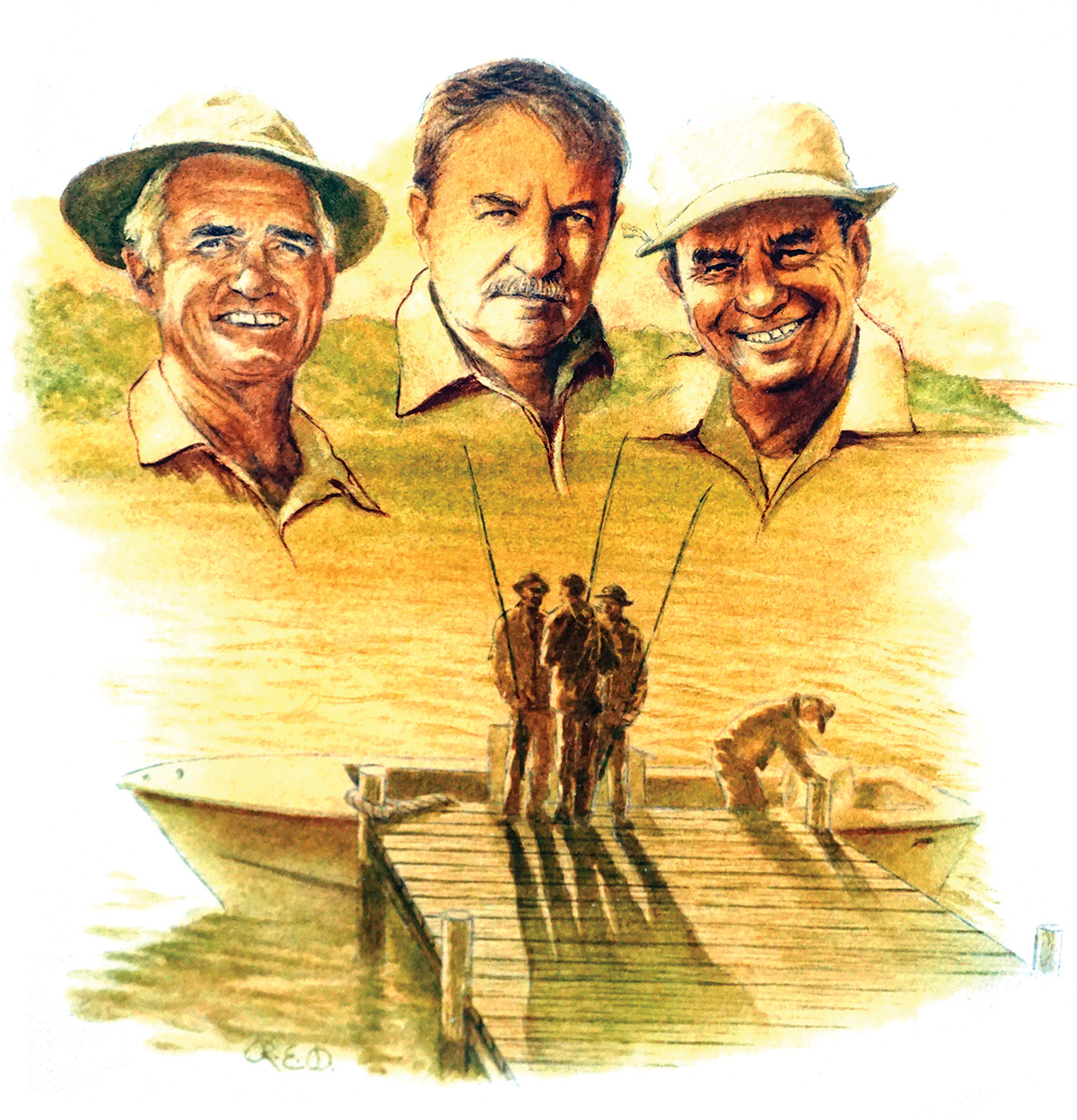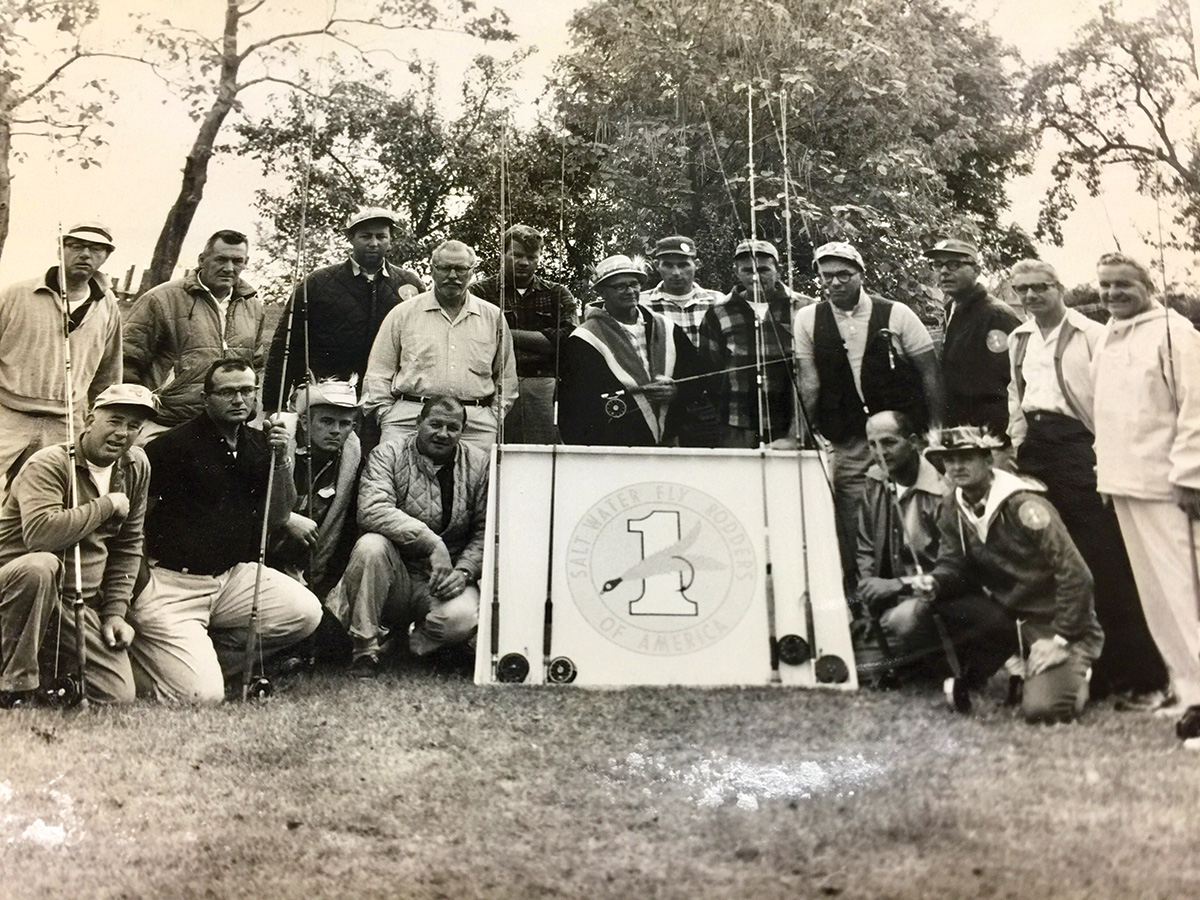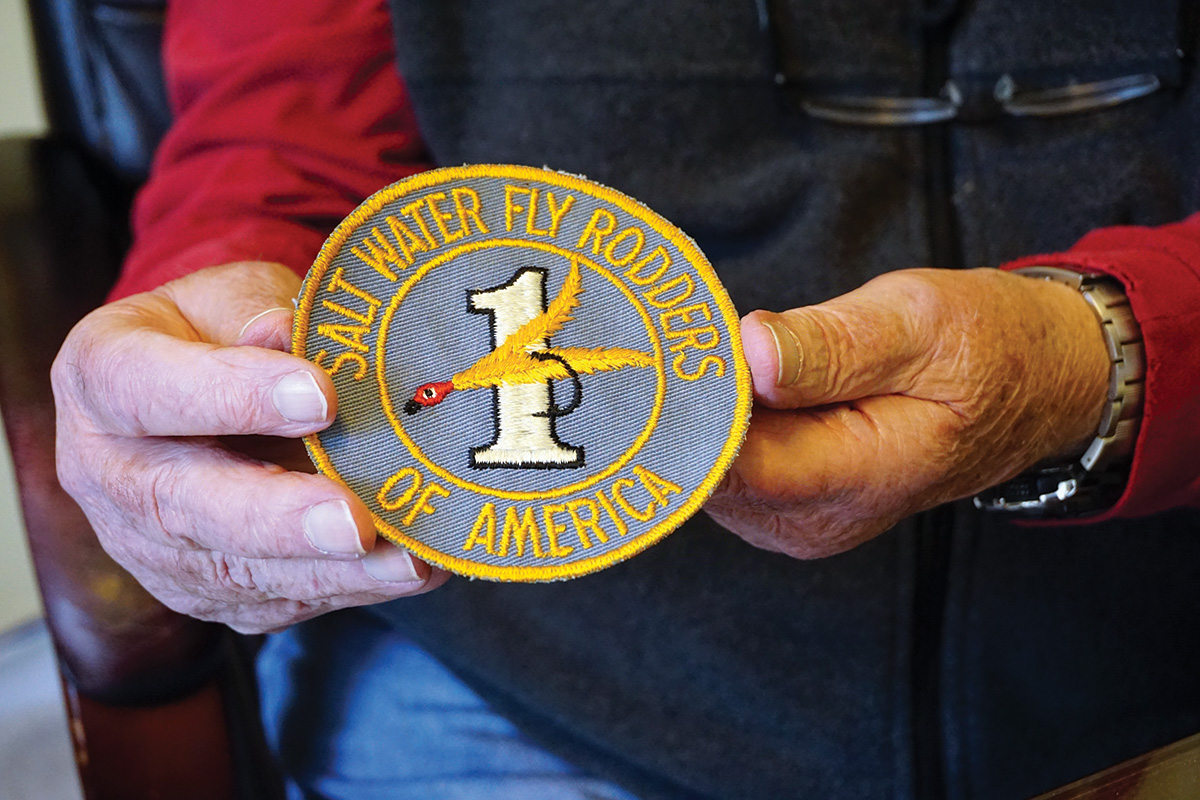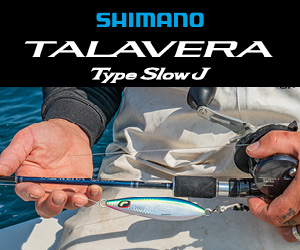
PROLOGUE: Vin T. Sparano, Editor Emeritus at Outdoor Life, wrote the following national magazine feature 30 years ago about a special day that had occurred in April of 1960. “There’s history here, the first meeting of the Salt Water Fly Rodders of America, the introduction of those early Fenwick fiberglass fly rods, the gathering of such saltwater pioneers as Frank Woolner, and the legends of Lefty Kreh and Joe Brooks,” Sparano told me earlier this year as he sat at his home office in Waretown, NJ.
I could tell you about great exploits as a fly fisherman. I could describe amazing feats with 200-pound tarpon at Homosassa, stealthily stalking bonefish on the Bahamian flats, or battling broad-backed trout in Argentina….but I’m sorry to say that none of those things have ever happened to me. Please don’t misunderstand. I have fished for tarpon, bonefish and trout with a fly rod. It’s just that trying to relive certain fly fishing memories can be painful.
I would prefer to talk about how I was introduced to fly fishing nearly 30 years ago. I was out of college only about a year or so when Outdoor Life magazine hired me as an Associate Editor. Even though I grew up in Newark, NJ, I still thought I knew a lot about hunting and fishing. Every chance I had I spent in the woods or on some stream somewhere.
When I wasn’t in the field I was reading the outdoor magazines, especially columns by such legends as Ray Bergman, Jack O’Connor, Jason Lucas, Joe Brooks and other giants in the field. So when Bill Rae, the Editor-in-Chief at that time, sent me to Toms River, New Jersey, to take part in the first official meeting of the Salt Water Flyrodders of America, I welcomed my chance to show my stuff. But then I found out that some of the attendees were the very same legends I had been reading about for years. I suddenly got weak in the knees.
It was a chilly April afternoon when I walked out on the dock in Toms River back in 1960. A group of fishermen were watching this short guy fly cast and spout the virtues of a fiberglass rod he helped design. I wasn’t much impressed with his sales pitch, but he amazed me with his casting. He would double-haul a few times, then shoot out about 100 feet of line. When all the loose coils at his feet finally sailed through the guides, the line would snap taut like a banjo string. When he had a good-sized audience, he took just the tip section of his two-piece fly rod and continued to double-haul and shoot out 60 to 80 feet of line. Then, using no fly rod at all, but only his fingers, he started casting 40 or 50 feet. I decided on the spot that there was no way in hell that I was going to pick up a fly rod in front of this guy.
I soon discovered that this great fly caster was Lefty Kreh, an expert I had been reading about for years. Naturally, Lefty made me nervous, but meeting the rest of the men on that dock really did me in. Frank Woolner, one of the pioneers of Salt Water Sportsman, shook my hand and led me over to Lefty who was wrapping up his demonstration. Lefty was so excited about his new fly rod that he shoved it at me and said, “Here, try it. The rod is perfect.”

So there I was. I held a 10-foot Fenwick rod in my hand with about 100 feet of fly line coiled at my feet. I looked out at the water and suddenly realized that I was staring at whitecaps and the wind was biting into my cheeks. I knew I had bought the farm. But what the hell. I stripped in all but 30 feet, picked up the line in one clean move, kept my backcast high and drove the rod forward in a powerful cast. I really don’t know what happened next, except that even today I realize how lucky that I did not have a big 2/0 Honey Blonde tied to that tippet. When I finished peeling loops of fly line and backing from around my head, neck and shoulders, I looked up and saw Lefty standing there. Probably for the first and last time in his life Lefty Kreh was speechless. Finally, he said, “I think I know what you’re doing wrong.” He was being kind.
When most of the outdoor press had retreated to the bar, which is usually where you’ll find most of the outdoor press, Lefty stayed on the dock and gave me fly casting lessons – the first I’d ever had in my life. He showed me the mechanics of the cast, which I have never forgotten. But timing, Lefty said, is the key to good fly casting. According to Lefty, my timing would come later. I have to confess that my timing never did improve a great deal, but I did learn to drive a big fly out a respectable distance without injury to myself nor anyone around me. I have Lefty to thank for that.
The following day turned out beautiful. The wind laid down, which it rarely does when I go fishing. The tide was just right and I knew we’d find some striped bass on the Barnegat Bay flats behind Island Beach State Park. I knew I could catch them on a casting rod with a Rebel plug, but now I had to use a fly rod, which would be no small obstacle for me and my newly described skill. Once out on the water I knew I would be comfortable with a fly rod because I would be away from the critical eyes of guys like Kreh, Woolner and that new show-off Jersey kid Mark Sosin, who was no older than me. How did he learn to use a fly rod so quickly?
Just when I was beginning to feel more confident, I met my partner for the day and I started to get the queasiest all over again. I’d be sharing a boat with Joe Brooks, the guy I used to watch on the American Sportsman television show every Sunday afternoon. Brooks was a celebrity and he never did anything wrong in a boat. I was in real trouble now.
As I recall, our guide for the day was a young local fisherman named George and he was ecstatic about taking someone like Joe Brooks fishing. Here was the famous fisherman George saw on television. Brooks was also the fishing editor of Outdoor Life and lots more. But I could immediately tell that George wasn’t too excited about the prospect of having me aboard. He didn’t really know who I was and I could tell that he didn’t much care.
George put Brooks in the bow of the boat so that he would have plenty of casting room. George sat in the stern of the big outboard boat, which left me in the middle seat with not a lot of room to control my casting so that I wouldn’t hurt anyone, including myself. I cleverly decided to keep my embarrassment to a minimum, so I pretended to spend a few minutes checking over my Honey Blonde and leader knots. I wanted Brooks to cast first, hoping he would get too busy to notice me. I really didn’t care whether I caught a striper. I just wanted to do some decent casting in front of these two guys. I tried to remember what Lefty taught me the day before. God, if I could cast like that! I imagine shooting more than 100 feet of fly line and backing through the guides, watching all those coils unravel at my feet and the line snapping tight like a garter belt.
So I toyed with my rod and watched Brooks out of the corner of my eye. What was this? No double-haul? After a few false casts, he let his balsa popper set down right over a drop off at the edge of the flats no more than 30 or 40 feet from the boat. He popped the popper a few times, the water exploded and Joe was fast into a 10- or 12-pound striper that he landed and carefully released.
Joe began casting again and all his casts were the same. He rarely double-hauled. There was no need to build up all that power into his casts. Joe was more concerned about getting his popper in the right spot where he knew the stripers would be feeding. Our boat would occasionally put us into the wind, forcing Joe to shoot out a more powerful cast. He knew how to cast well into his fly line, and didn’t knock himself out with long casts because he knew where the fish were. We could reach them easily.

Joe caught about a dozen stripers that day and I even picked up a few. It didn’t matter that my double-haul was awful. I knew I could catch fish anyway. Joe explained that understanding structure and fish habits were more important than firing out a long cast. He proved it that day, and I proved it to myself when I caught a few stripers with my awkward casting. But as Joe explained later there are times when you are forced into a situation where you will have to get out that long line. The point he proved, though, is that you don’t have to be a master of the fly rod to catch fish.
Over the years, Joe, Lefty and I became good friends. I have fished and worked with both men and I enjoyed every minute of it. Joe posed for all the fly casting photos in my Complete Outdoors Encyclopedia. At one point in our careers, Lefty became Outdoor Life’s fishing editor and I had many opportunities to get into the field with him. Joe, unfortunately, is no longer with us. But Lefty and I are still around to relive old times.
I’ll never forget those days with Lefty and Joe on Toms River nearly 40 years ago. I learned a lot from my two friends. Whenever I pull off a good cast with a fly rod, I know I’m using the same techniques that Lefty showed me. I still see Lefty, but I don’t think I’ve reminded him lately of our first encounter so long ago on Barnegat Bay.
I wish I could have fished more often with Joe Brooks, but it just wasn’t meant to be. I’ll always remember Joe catching those stripers on those little short casts with a balsa popper that still bears his name. Joe read the water. He knew the fish were there. He didn’t have to drive out 100 feet of line to catch those fish and he knew it.
I learned a lot from Lefty and Joe. My hope is that someday I’ll be able to repay them by helping some young fly fisherman who can’t figure out where all the knots came from in his leader.
EPILOGUE: The original Salt Water Fly Rodders of America (SWFRA) would disband in 1977, replaced loosely in 1987 with the Tuesday night flytying meetings at the home of Bob Popovics in Seaside Park and then more officially in 1992 with the formation of the Atlantic Salt Water Fly Rodders (www.aswf.info). Presently, Popovics and Lefty Kreh are working on a project compiling a comprehensive history of saltwater fly fishing. As soon as it’s available to the public, you’ll hear about here in The Fisherman Magazine.




